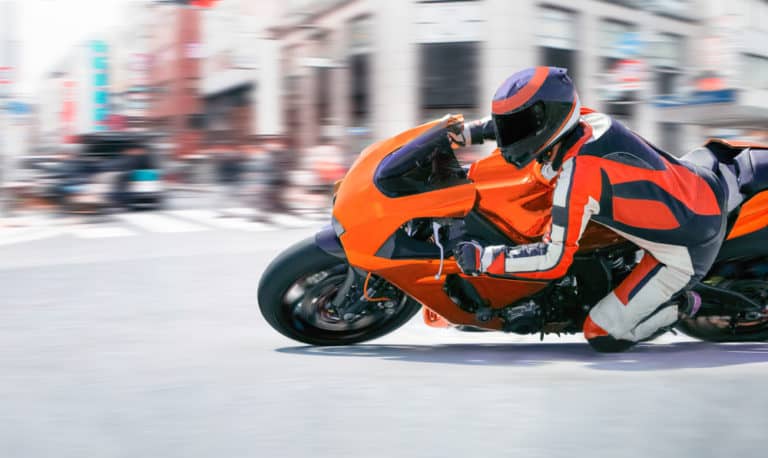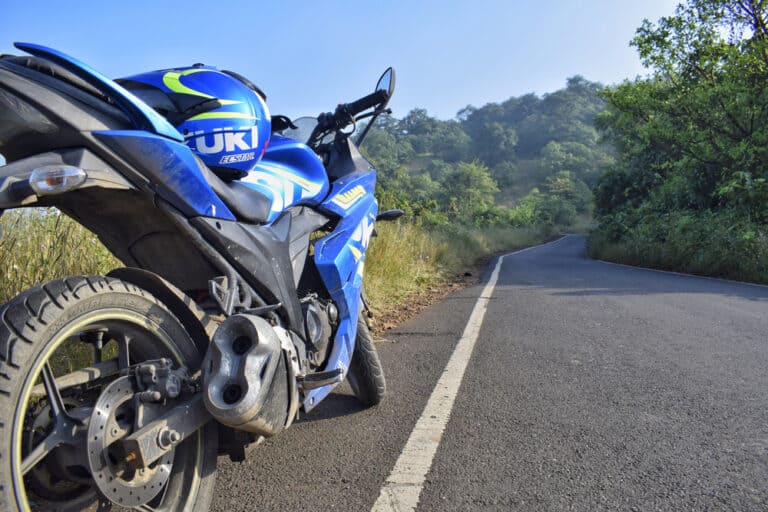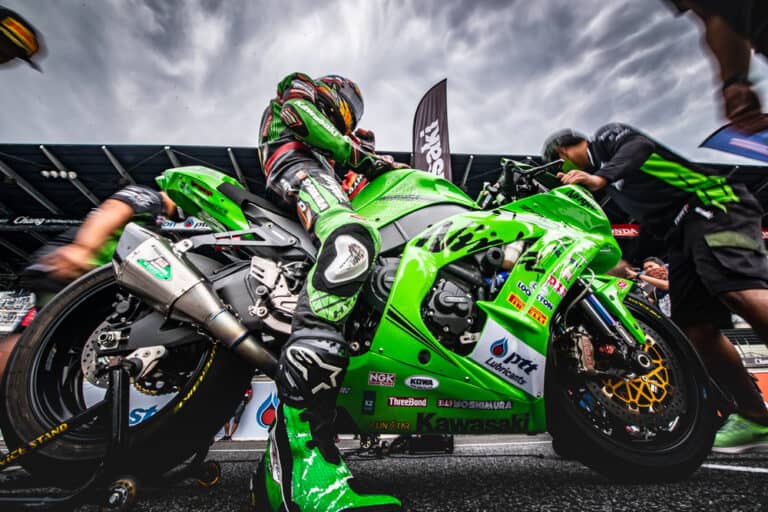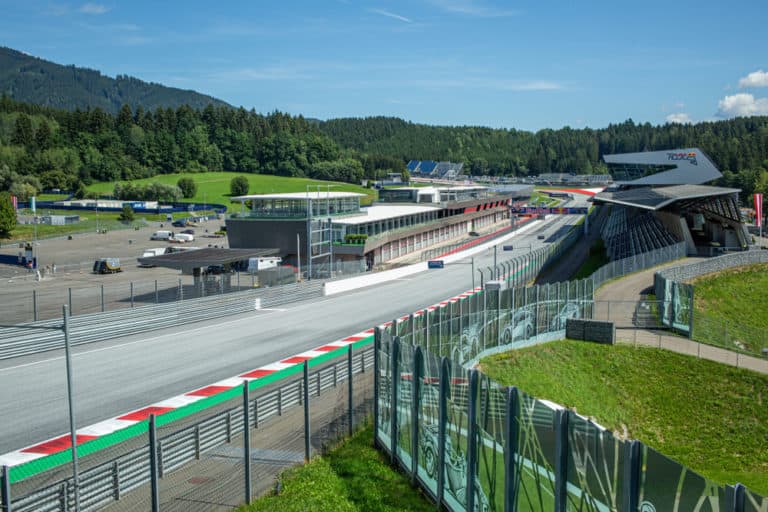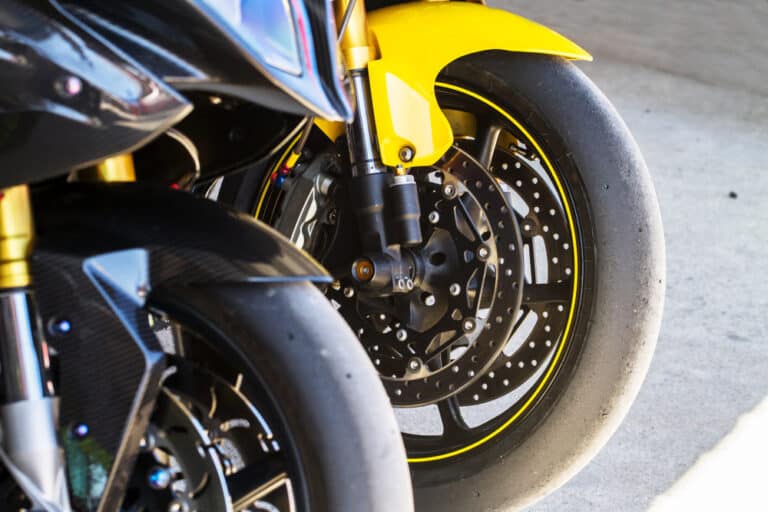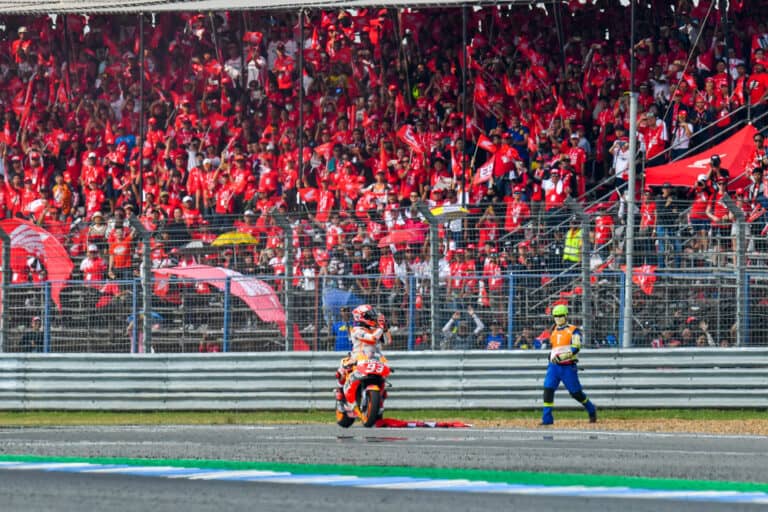Images editorial credit: Abdul Razak Latif / Shutterstock.com & Shutterstock.com
In my corner of the world, a Sunday morning might as well be race day at Aragon, with hundreds of standard (and not-so-standard) motorcycles beating their way over the mountain pass nearby and along the winding road past my home.
Judging by the scream of the flow-through pipes and the speed at which these weekend warriors negotiate the tight turns, there really cannot be too much difference between them and MotoGP bikes, surely?
MotoGP bikes differ from normal bikes in almost every way
- MotoGP bike tires run hotter with superior grip
- MotoGP bikes have more horsepower/acceleration
- MotoGP bikes are the strongest, lightest, and most flexible bikes available
- MotoGP bikes have much more advanced electronics
- MotoGP bikes have aluminum frames
- MotoGP bikes cost 2000% more than the average normal bike
Both bikes have a frame, engine, two tires, etc., but that is honestly where the similarity ends. Let’s take a more in-depth look at the differences now:
Can I Buy a MotoGP Bike at the Season End?
MotoGP bikes are complete prototypes, designed from scratch and filled with advanced technology, known only to the team involved in building the bike, and therefore jam-packed with secrets that no team would want to be shared on the open market.
Some secrets might never work but might still give another team a glimmer of direction, showing where the team was heading with the bike, which might be enough for them to be trumped in the race to a new technological breakthrough.
MotoGP bikes are never made available to the public, although some former riders or ‘In Crowd’ might well be presented with a bike when the team no longer plans to use it.
Being prototypes, they are made in small numbers. Maybe around seven to eight with a maximum of ten produced for the various riders in the team. Engines are limited to seven per rider, per season. Keeping that in mind, the same bike is used by lower teams (satellites) the following year.
The GP bikes will have titanium, carbon fiber, and magnesium parts all over, and this choice of materials would be prohibitively expensive if applied to a production bike.
ECU’s on MotoGP bikes are mapped for the individual rider, for track layout, and for the specific weather conditions on a particular day – though there are regulated limits to what ECU mapping you are permitted to do on a GP bike. None of this is offered on production bikes.
MotoGP Bikes vs. Normal Bikes:
1.Tires
MotoGP bikes’ tires are called slicks and have zero tread on them, perfect for motor racing but possibly fatal – and undoubtedly illegal – on a motorcycle on a public road.
The tires are no longer made from rubber but are made up of a complex chemical compound designed to work optimally in a specific temperature range. On a road bike, these temperatures are around 75 degrees C / 165 F in the dry, and can drop to around 60C in wet conditions.
A MotoGP tire will not be able to function correctly in terms of road holding at 75C. It would rotate normally, but as soon as the rider leaned into a corner, he would almost certainly fall off. Without heat in the tire, it would not soften enough to grip the asphalt as the rider throws the bike into the bend (See the Mir/Abrahams example below).
MotoGP tires need to be at least a whopping 100C/212F (which is the temperature at which water boils at sea level) for the riders to have any confidence whatsoever in the tires’ ability to take the bike safely through a bend.
The back tire would preferably be around 120C / 248F, and these temperatures would shred a standard road bike’s tire. Before all MotoGP races, the pit crew will set the bike up as they want for the day’s racing and the final step is to add tire warmers around both tires before the rider mounts for the race.
If you have enjoyed watching MotoGP races either live or on TV, you may remember seeing a car leading the bikes around the track for one lap before the start. This is the well-named warm-up lap, and although you may initially see riders pulling their leathers up or down to get comfortable, this lap is all about the tires and brakes.
With less than 100C / 212F in the tires, specifically, the rear one, the lean-angles produced by these top-class riders will see them unseated on one of the early corners. They must use the warm-up lap correctly and get heat into the tires in both wet and dry conditions.
The way they do this is by weaving from side to side, hopefully avoiding the other riders as they do so, although this is not always successful, as seen when Joan Mir and Karel Abrahams took a tumble together in 2019.
Abrahams lost his front wheel (Not literally, but lost control thereof!) and slid into Johan Zarco, who somehow managed to remain upright.
A moment later, the rookie Mir also hit the deck trying to avoid Abrahams and slid his bike into the Czech. Mir reckoned the crash would have likely been down to a cold front tire but added: “In the end, sincerely, I don’t know what happened.
I braked really early, not harder than the other riders, and locked the front, traveling dead straight and with no pressure on the brakes.”
We could all see what it was as it unfolded on TV, and Mir was correct – cold tires.
Bear in mind that this is after the tire warmers in the pits had already warmed up the tires. We see from this the enormous difference between MotoGP and normal bikes’ tire requirements.
Because MotoGP machines use race-specific components under extreme conditions during regular racing, several parts may not last more than a few hours. Conversely, the mass-produced tires for road bikes are standard compounds made for many conditions and can last for two thousand km or more.
Race-performance tires are made with a sticky, soft compound to provide the much-needed grip required to keep the bikes upright and prevent them from sliding off the track in the corners. These tires, which can withstand far higher temperatures than production tires, have a notably shorter life span.
We can see from this that apart from the nominal cost, ongoing costs are far higher than they are for a road bike, where tires might last 2000km / 1250miles. On a MotoGP bike, they will be used for a maximum of one race – and will undoubtedly be shredding by the end of the plus-minus 22 laps.
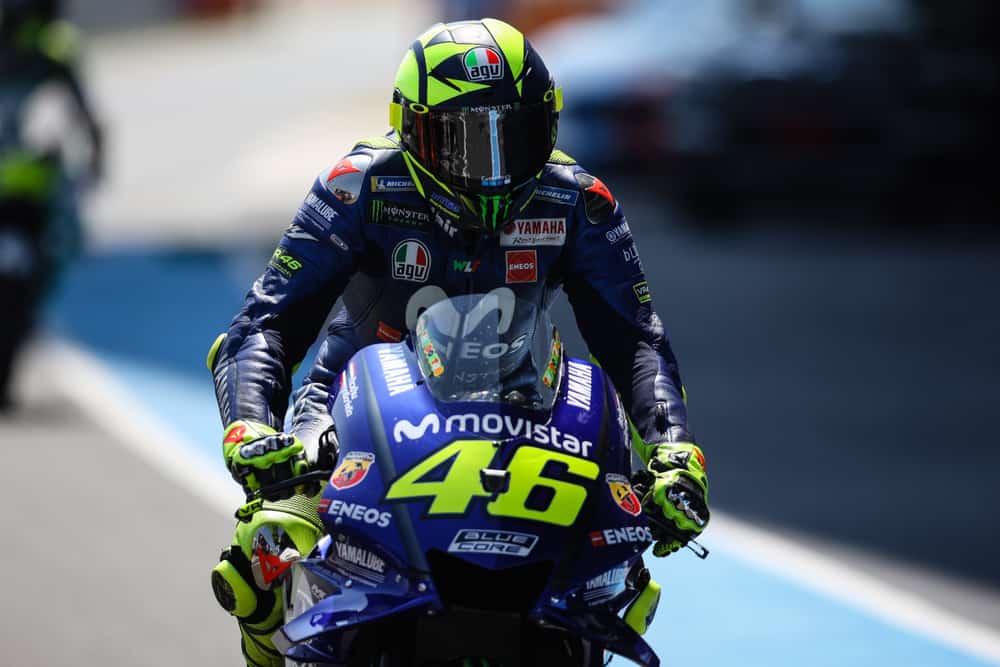
2. Engines
A standard 1000 cubic centimeter (cc) motorcycle engine can produce around 200 horsepower (hp) and reach 225hp after a robust tuning. While MotoGP engineers don’t generally publish the hp at which their bikes can run, it has to be close to 280hp to reach the speeds they do.
Johan Zarco reached a top speed of 362.40km / 225mph in a practice session before the Qatar GP in 2021. This was on a Ducati, and with that kind of grunt, the Bologna-based team has possibly achieved more than 300hp, and the other manufacturers will surely follow.
Interesting when comparing a normal road bike to a MotoGP bike is the enormous price difference. The Honda CBR1000RR-R Fireblade costs around U$28 000 in a showroom, but the MotoGP engine alone from Honda costs just over U$200 000!
3. Materials
Unlike standard road bikes built via an assembly line, MotoGP bikes are all prototypes, hence the estimated production price of U$1 million-plus per bike. Most factories use specific parts from third-party manufacturers (Ohlins for their suspension, etc.), but few bike-specific parts are produced, and these are custom-made for the specific rider.
Unlike their road-bound cousins, several MotoGP bikes now have seamless transmissions, which allow clutch-less gear shifting, allowing quicker recoveries from cornering and braking situations.
These racing engines use pneumatic valves rather than the spring valves used by normal motorcycles and are far more efficient.
The price tag for a MotoGP bike might actually be several times higher than U$1 million, as this does not include research and development, without which there would be no improvements each year.
Production (normal) bikes have fairings made from ABS, or Acrylonitrile Butadiene Styrene, a thermoplastic polymer generally used for injection molding applications and is ideal for road bikes. MotoGP bikes use carbon fiber, however, which is a great deal lighter and far more robust.
Technology has improved on normal bikes but has leaped forward on these MotoGP monsters. These motorcycles have up to 40 sensors that gather all kinds of data, from suspension travel, brake and exhaust temperature to steering angle, fuel consumption, and tire wear.
Where normal bike consumers will pay U$2000 to U$15 000 for a set of front forks, a pair for a MotoGP bike will be over U$107 000.
4. Weight
The Honda CB1100 with a 1140cc engine weighs around 245kg / 540lbs, whereas a MotoGP bike will weigh in under 160kg / 352lbs. This significant difference is due to the materials used: CFRP (Carbon Fiber Reinforced Polymer) is a high-performance, extremely light-weight composite material. It is formed from a resin and a fabric made of carbon threads that are less than a micron in diameter. A human hair is around 70 times larger.
At present, all MotoGP motorcycles use carbon brakes, most teams use carbon-fiber fork-sliders, and many have carbon-fiber swingarms.
Some believe that carbon brakes are the innovation that has had the most significant impact on MotoGP bikes’ performance. These brakes – unexpectedly – are not made from carbon fiber but rather carbon-carbon. This composite was initially developed for the military to be used on the nose cones of missiles.
Former World Champion, Wayne Rainey, tried carbon pads and discs during practice for the 1988 British GP at Donington Park, which most believe is the first time they were tried on a MotoGP bike, but with teams being so secretive…who knows?
Rainey was so impressed by the brakes that even though they were unproven, he insisted on racing them. It was the reduced front-wheel inertia rather than the improved braking ability that convinced him, helping him flick the bike from side to side more quickly. In a 22-lap race, this promised a substantial advantage, and he walked the race, despite nearly crashing on the warm-up lap while the tires and brakes were still colder than optimum. (Sound familiar?)
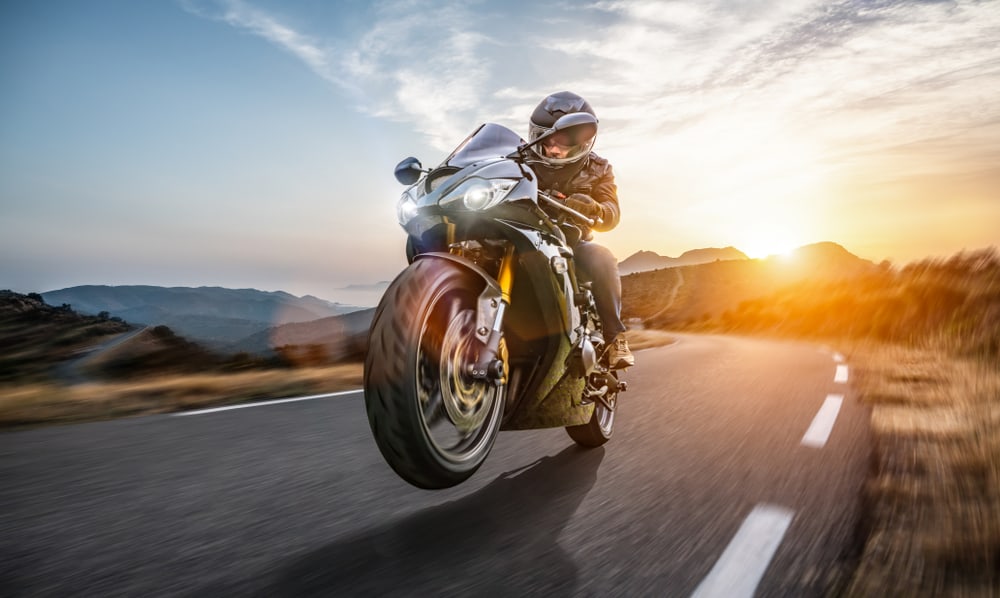
5. Frame
The primary function of the bike’s frame (also called the chassis) is to hold the different parts together in a structure and prevent it from falling apart. The motorcycle frame supports the suspension, seats, handlebars, fuel tank, and engine.
Rigidity, flexibility, and weight are the three most essential components of the chassis. Most MotoGP bikes’ chassis are still made from twin-tube aluminum despite carbon fiber being lighter than aluminum. KTM is the sole exception, as we’ll see later.
An engineer can tailor rigidity, flexibility, and twist with carbon fiber better than with aluminum, and therefore has more chance of producing the right kind of lateral flex required to improve the machine’s grip and therefore turning ability.
Some engineers suggest that the correct measure of flex can also create a self-turning effect by effectively twisting the wheelbase around the corner.
They also work in this area with different stiffness triple clamps, different steering-head bearings’ set-ups, and so on, so why is there still no carbon fiber chassis on the MotoGP grid?
Corrado Cecchinelli, a former Deputy Director at Ducati, Had this to say:” Carbon fiber is the correct choice of material if you are using big surface skins, but it is not correct for use on small shapes. Therefore, I believe it is the correct application for a swingarm because it is designed with rigidity as a criterion.
That doesn’t suggest that it is designed to be as stiff as possible, but rather that it is designed for a specifically targeted stiffness.
You want ‘3D’-type stiffness in a swingarm. That is, you want the swingarm to bend when the bike leans, but you don’t want it to twist. When using carbon fiber, you can direct the orientation of the fibers in the desired direction, giving you the 3-D stiffness you seek.
Generally, when considering the strength needed for a given target stiffness, a swingarm would probably be lighter if made from carbon fiber rather than from aluminum. It is undoubtedly more challenging to produce a swingarm using carbon, and the material is markedly more expensive.
There are also safety concerns, but not because carbon fiber is less safe. Instead, the cause of a crash where the swingarm was made from carbon fiber is complicated to determine. After a big crash, you send the swingarm back to the home factory for tests using x-ray, and there are other complicated inspections. This inspection can not be done at the track.
A big accident may require that you replace the swingarm just for safety, and if made of carbon fiber, this can be very expensive.
So there are still issues about using carbon fiber. But still, if you ask me,” continues Cecchinelli, “it is the correct technology to use when manufacturing a swingarm because of the advantages that I’ve mentioned.”
Carbon Fiber swingarms are difficult to design and difficult to produce, and they are suspect in the case of a big crash. As a result, the conventional technology is aluminum which gives more than acceptable results, and it is still the most common technology in use today.
Cost also plays an enormous role. “I cannot produce a road bike from carbon fiber because of the cost and possible damage in a crash.
If you were to use carbon fiber layers as you might with aluminum, you might even end up with a heavier result with the fibers running in one direction. Without proper knowledge of the stiffness you need in each direction, you might finish with something much more expensive that has no real benefit.
So it’s not always better.”
Pit Beirer, the director of the KTM MotoGP team, still believes firmly in steel for the bike’s chassis, and after 18 straight wins in the Dakar Rally and five straight World Championships in Supercross, he has a point.
“We will never leave aside the tubular chassis because it is one of the main advantages of our bikes,” he said. “You gain flexibility and lose weight; that’s how we dominate the motorcycling world in many disciplines.” Brad Binder has already won in the MotoGP class, so perhaps Beirer will indeed stick with a steel chassis, but he is the only one who has.
6. Brakes
Disc brakes on MotoGP bikes are made of carbon, lighter than discs made from steel or iron, which are standard on normal bikes. Carbon discs allow the rider to change directions without losing control, and they require high temperatures to be effective and cannot be used in wet weather because the rain cools them too quickly.
In wet weather, steel disc brakes are used (and because different calipers and pads are needed, MotoGP riders can switch bikes during a race.)
The front brakes are the most active on a MotoGP bike, and up to 90 percent of the bike’s weight is transferred from the center of the frame to the front wheel when brakes are engaged at speed. Carbon discs are essential for good, safe control under braking at the speeds generated by an angry MotoGP bike.
Conclusion
While a normal road motorcycle may sound like a MotoGP bike to our ears and move like a MotoGP bike to our eyes, there are hundreds of subtle and sometimes not-so-subtle nuances that separate the two levels of technology. We should never confuse them.

